Today was even more incredible — Kyoto continues to surprise me. We were given a lecture by Monica Bethe, a leading expert on Noh, and were then left to our own devices, for Miyamoto-San had to postpone his lecture due to illness. Sohum, Si Hou, and I ended up visiting Kinkakuji and Ryoanji.
Consciousness arrived at 5 rather than 4 in the morning, which I am surprisingly unbothered by. After getting lost finding Otero Pan with Si Hou and Joanne, we ended up at St. Marc’s for chocolate croissants after being disappointed twice. Afterwards, I had a brief but nice coffee with Jane, a senior art history major at Vassar who is doing research on a Japanese photographer’s work. Familiar things always arise even in the most unfamiliar of places.
Afterwards, we headed to Terminal Kyoto for a lecture by Monica Bethe, who primed us on the Noh performances we will see performed tomorrow. I was responsible for doing research on Noh-related matters (costumes and masks) and was blown away by her wealth of knowledge. She went over the basics of the craft and then delved deeper into its parts, from the arrhythmic melodies of song and instrument to how a Noh actor moves his hands. Professor Bethe also gave us instructions on how to hold a fan properly and how to sing the instrument players’ melodies. She was very patient with my incessant questions — I would love to talk about Noh with her in more depth. Her comments on intergenerational pressures was quite interesting; I’m now wondering if tradition persists in modern times because of external pressures (related to family, religion, and belief) more so than of adaptation.
Once the lecture finished, Sohum, Si Hou, and I trekked to Kinkakuji, or the Temple of the Golden Pavilion. I read and fell in love with the building after reading Yukio Mishima’s novel of the same name, and the actual site did not disappoint. The phoenix atop the final story tied everything together — a sense of incipient flight is achieved through the roof corners that curve upwards to points, while the raised platform upon which the building sits lends it a floating quality. Observing the play of light on the gold-clad walls was the most spectacular sight — it’s quite a shame that Monet did not use his skills to paint this temple during his lifetime.
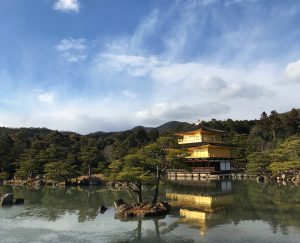
The Temple of the Golden Pavilion.
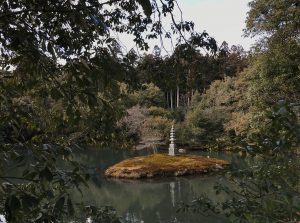
The smaller pond at Kinkaku-ji. This was such a serene sight.
We then walked to Ryoanji, which is famous for its rock garden. Admittedly, I thought I would be unimpressed by the sight, but it left an indelible impact on me. The landscape the garden’s parts create, from the pebbles horizontally raked to the boulders firmly planted, is soothing to the eye. Maybe it’s the interplay between order and disorder, or something more fundamental than that — I’ve yet to find the words to adequately describe its impact, but all I know is this: it was a sight of beauty to behold.
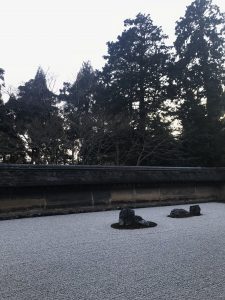
The famous rock garden at Ryoanji.
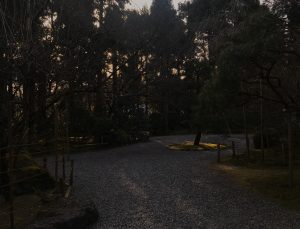
One of the side pathways on the way towards Ryoanji.
On a personal note, I tried some incredible ramen for dinner at Ramen Sen No Kaze. I will definitely be coming back to try the shio ramen, the local favorite. I’ve fallen in love with the city even more, a state that I will become familiar with for the duration of my stay. Kyoto, you’ve yet to disappoint.
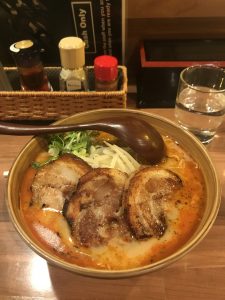
Ramen a.k.a. heaven in a bowl.

